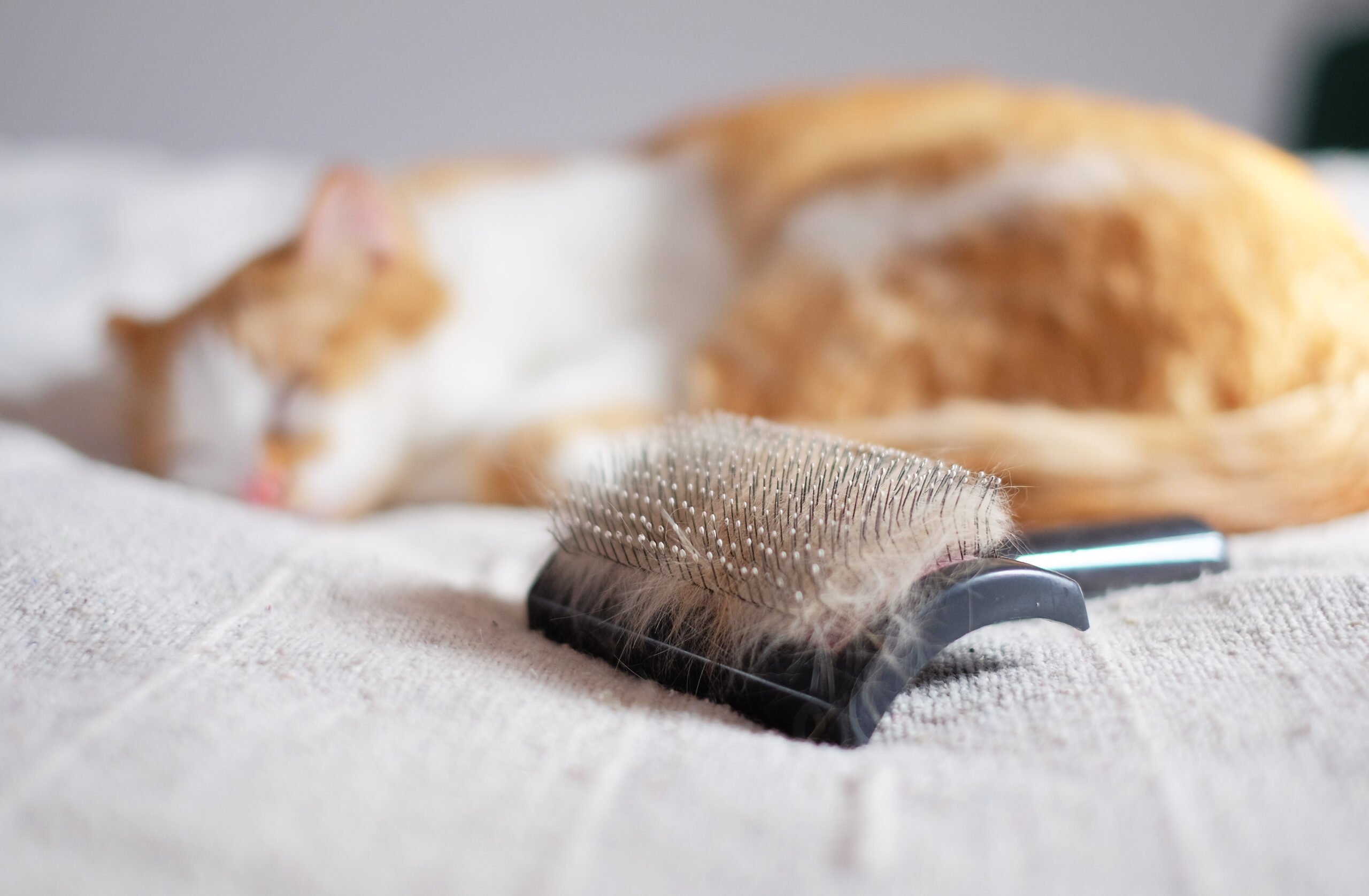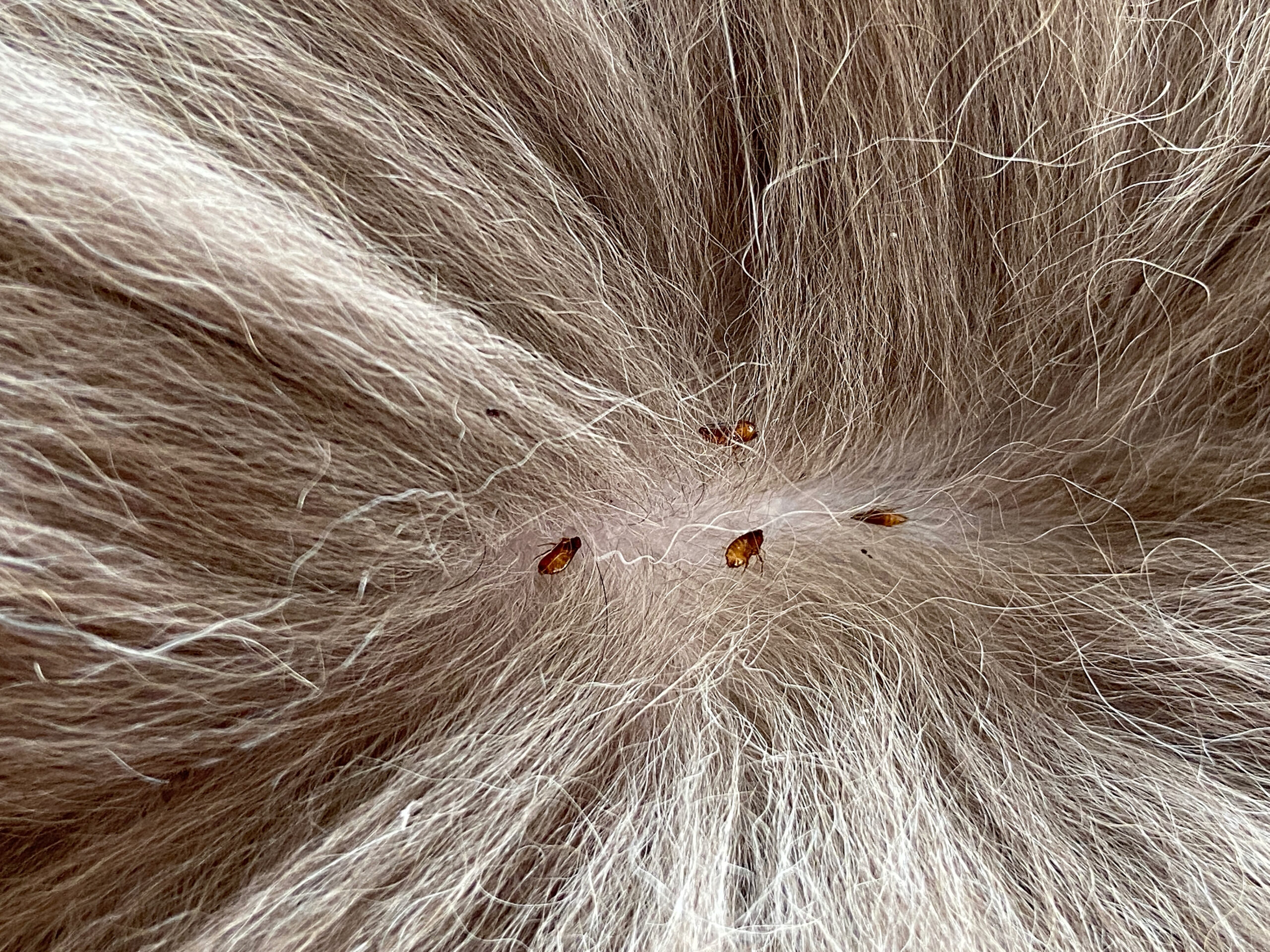How to Determine If Your Pet Has Bloodthirsty Pests
How to Determine If Your Pet Has Bloodthirsty Pests
Happy National Pet Day! One of the intrinsic requirements of owning a pet is keeping an eye on their health to make sure that everything is functioning as normal. While each species and subspecies have varying health concerns that can arise, furry pets have a similar risk: being infested by bloodthirsty pests. Although their fur keeps them warm and gives them a distinct appearance, cats and dogs run the risk of contracting various pests that could hide within the fur. Fleas and ticks are the most common, and this sector of pests is referred to as parasites. There are two main types of parasites that can infect a furry animal: external and internal. External parasites (ticks and fleas) bite the skin and stay within the coat, and internal parasites (heart worms) get inside the body and can be fatal to the organs and internal systems. Either way, parasites are not something to mess with.
Before diving into the clear signs that your cat or dog is unfortunately dealing with an external parasite, there are a few key differences between ticks and fleas to discuss. Fleas take about 3 weeks to complete all of their life cycles, and they would prefer to do so on their host. They can jump up to 7 inches high, and they will not transfer hosts unless they absolutely need to. Fleas live about 3 months with sufficient feedings. Ticks do not spend their whole lives on a host, and prefer to take a break in between feedings to digest and recover. A tick will spend up to one week on a host, drinking the blood until it becomes gray and engorged. After feeding from the same spot, the tick will retreat to a secluded area and digest until it’s hungry again. But both pests can have mostly the same effects on a pet, and it is important to keep an eye out for these signs and take your furry friend to the vet as soon as possible upon witnessing them.
Persistent Itching

This is the most well-known sign on this list, and for good reason. It can be the earliest cue to a pest’s presence, especially if your pet does not normally scratch its ears or neck. However, it is not a complete guarantee that your dog or cat is riddled with fleas if it randomly stops to scratch its ear. It could be dry skin or an innocent itch that the animal needed to address. But accompanied with any of these other signs, the scratching could signal to a deeper pest problem. If the pet is restless and can’t seem to get comfortable when it tries to lie down in its normal spots, it can be because fleas or ticks are irritating its skin too much. Another way that cats and dogs try to get to the pests is by shaking their heads. If the insects get inside or right under the ear, the animal will shake its head in an effort to shake them off.
Infection Symptoms

Deeper symptoms typically only pop up if the pest problem goes unaddressed for months. If the fleas or ticks have previously fed on an infected host, they can transfer that infection to your pet. The disease would not become apparent for a few months, and can even take hold after the pests have left. The specific symptoms differ depending on the infection, but they all involve the pet acting differently than usual. Some common symptoms that are often linked to Lyme disease from ticks include loss of appetite, fatigue, fever, and a limp. Smaller breeds can even become anemic and lethargic if too many pests have been feeding on their blood. If you had fleas or ticks removed from your furry friend, make sure to keep an eye on them for the next few months to make sure that no alarming symptoms arise.
Consistent Biting

A dog or cat using its leg to scratch at its ear is not an abnormal occurrence, but it could be cause for concern if it’s paired with the pet biting at its skin. You may have occasionally seen your pet intensely nibble at its front paws and legs when lying down, and one of the potential reasons for doing this is to get at some troublesome pests that were biting your pet first. If the problem is a tick, the pet will bite at the specific area that the tick is feeding from. But since ticks try to feed from the most hard-to-reach places on a host for maximum protection, it will be difficult for a dog or cat to reach it. When fleas are the problem, a pet is likely nibbling at the bites rather than the actual insects, as tiny fleas will move all around the back of a host to bite from different areas. Their saliva contains proteins that make the host itch, and this can be quite irritating when there are too many bites to count.
Hair Loss

Hair loss is not a direct result of being bitten by a pest, but rather from the reaction to those bites. Due to the aforementioned scratching, biting, and licking, cats and dogs can potentially cause their own hair loss when they are trying to handle their frustrating bites. Pets incessantly licking a spot on their paw or leg to the point of making their skin raw is a disorder called a lick granuloma. But this is not always the fault of the pet, as they could just be trying to get at the bloodthirsty pests. If the pet is scratching at the flea bites or actual ticks on their neck, they could lose some fur in that spot. The neck and tail areas are the most commonly affected because fleas and ticks favor these spots. Hair loss may not be too obvious on a pet that already sheds, but the impacted area will begin to stand out the longer that the pests are on the animal.
Black Specks

No, this is not some sort of strange pet dander. If you find small black specks on your pet, it could be flea dirt. This is essentially flea feces, as it is the digested blood that they pass while on a host. It can stay on the skin or fur, and will be especially evident if there are many fleas on the host. Flea dirt can also be found on the pet’s bed(s), blankets, and carpet. It all depends on where your cat or dog likes to hang out. If your furry friend has fleas, it’s essential to also treat the spots where they spend most of their time. When it comes to a blanket or bed, depending on how infested it is, it may be best to cut your losses and toss it. However, since pets can get a little dirty from spending time outside, there is a way to determine if the black specks are flea dirt or actual dirt. When flea dirt gets wet, it turns red because of the blood. Place some of the dirt on a paper towel and drop some water onto it; the result of it turning red or staying black will give you your answer.
Skin Issues

It makes sense that these biting pests would cause skin issues for your pet, especially if the infestation goes untreated for too long. These concerns are easier to see if the pet is also losing hair, or if their hair was not that thick to begin with. Some of the common skin conditions that come from fleas and ticks are the skin becoming itchy, swollen, inflamed, red, or scabby. The affected skin will darken over time, so any bright-looking imperfections are fresh. You can check for specific skin issues by parting the fur in different areas to see the skin. While some flea & tick treatments are taken orally, most are topical medications that are applied to the skin. They work to both repel the pests and soothe the skin conditions. It’s best to talk to your vet about treatments and medications, as they will be able to prescribe the most effective ones depending on your pet’s health history.
Testing Your Pet for Pests

At this point, you may be wondering how to know for certain that your dog or cat has external parasites. After all, some of these signs could be confused for other health concerns that also require attention. The easiest way to determine if bloodthirsty pests are the problem is to check the pet’s fur and skin, preferably over a light-colored surface so you can see if anything falls off. Run your fingers through their fur and inspect the skin at random spots, as the pests can start to move once their host’s skin is addressed. The areas around the neck, tail, and thighs are the most targeted because they provide great hiding spots for the pests. When inspecting the skin, check for red spots and flea dirt, as these are the two clear signs that it’s a flea problem. Ticks are solitary and stay attached to one spot, so you would just see a gray tick body sticking out. Preventing and treating your pets for these pests is important. It not only protects your beloved pet from some harmful diseases, but it also keeps all humans in the home safe from potentially picking up some of these tiny hitchhikers.
Green Protects Pets From Pests
When bloodthirsty pests are involved, it is essential to get professional pest control services involved. However, most companies (including ours) require that all furry pets are first treated for fleas and ticks in order to provide services. This is because the pest treatments would be all for nothing if the dogs or cats are not personally treated for these pests already. The home may be treated, but the pests could still be comfortably living on the animal. But once the pets are all treated for fleas and ticks, Green Pest Services is happy to help! We use the same eco-friendly treatments to combat fleas, ticks, and mosquitos, since all of these bloodthirsty insects are stopped in similar ways. Contact us for more information on how our thorough services can free up your furry friends’ time for fun and games, not scratching at irritated bites.
Citations
10 steps to keep your pets pest-free. (n.d.). Pest World. Retrieved March 9, 2023, from https://www.pestworld.org/news-hub/pest-articles/10-steps-to-keep-your-pets-pest-free/
Clason, D. (2022, November 6). Looking for signs your dog has ticks? These telltale symptoms mean you have a flea or tick problem. Pawtracks. Available at https://www.pawtracks.com/getting-started/dogs-ticks-signs/ (Accessed on March 9, 2023).
Esposito, D. (2022, March 11). How to tell if your dog has fleas. The Dodo. Available at https://www.thedodo.com/dodowell/how-to-tell-if-your-dog-has-fleas (Accessed on March 9, 2023).
How to know your dog has fleas. (2021, March 6). Dr. Phillips Animal Hospital. Retrieved March 9, 2023, from https://drphillipsanimalhospital.com/2021/03/06/7-signs-your-dog-has-fleas/
How to tell if your dog has a tick. (n.d.). Your Pet & You. Retrieved March 9, 2023, from https://yourpetandyou.elanco.com/us/parasites/ticks/how-to-tell-if-your-dog-has-ticks
Kearley, M. (2022, July 21). What do fleas look like on dogs?. Pet MD. Available at https://www.petmd.com/dog/what-do-fleas-look-dogs (Accessed on March 9, 2023).
Stregowski, J. (2022, March 8). Common parasites found on and inside dogs. The Spruce Pets. Available at https://www.thesprucepets.com/common-dog-parasites-1117427 (Accessed on March 9, 2023).

